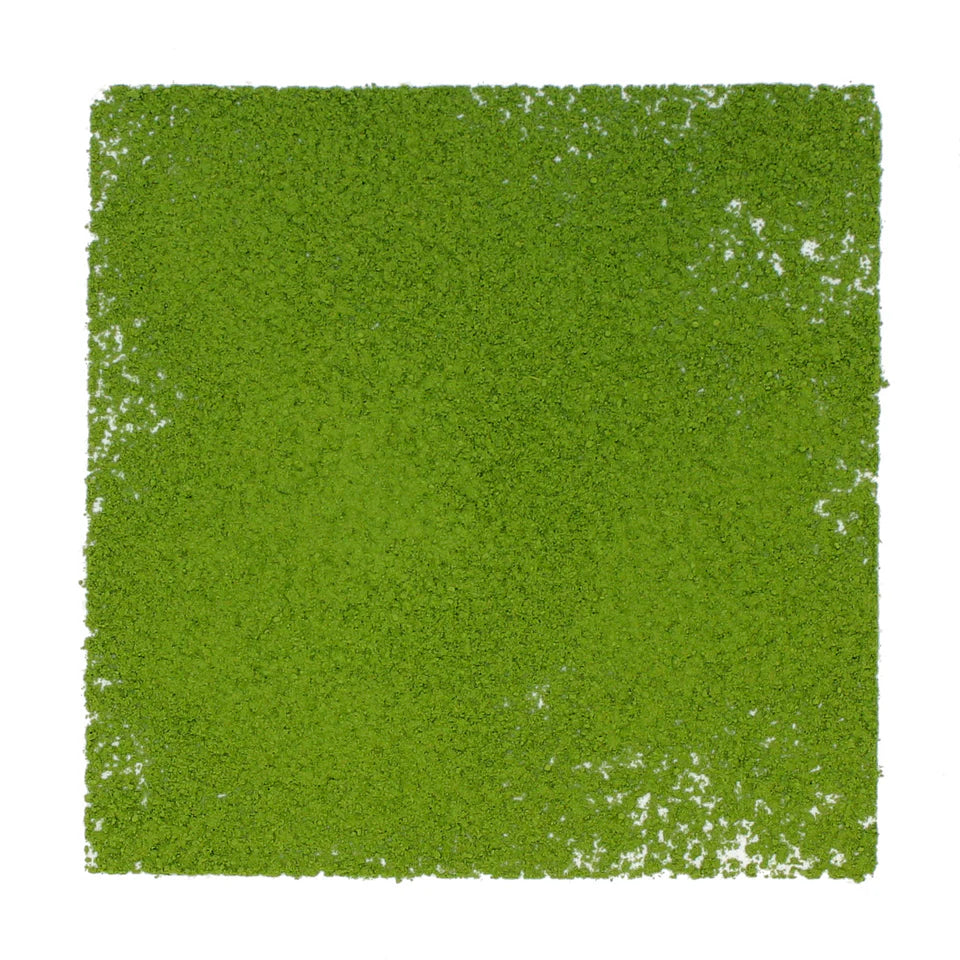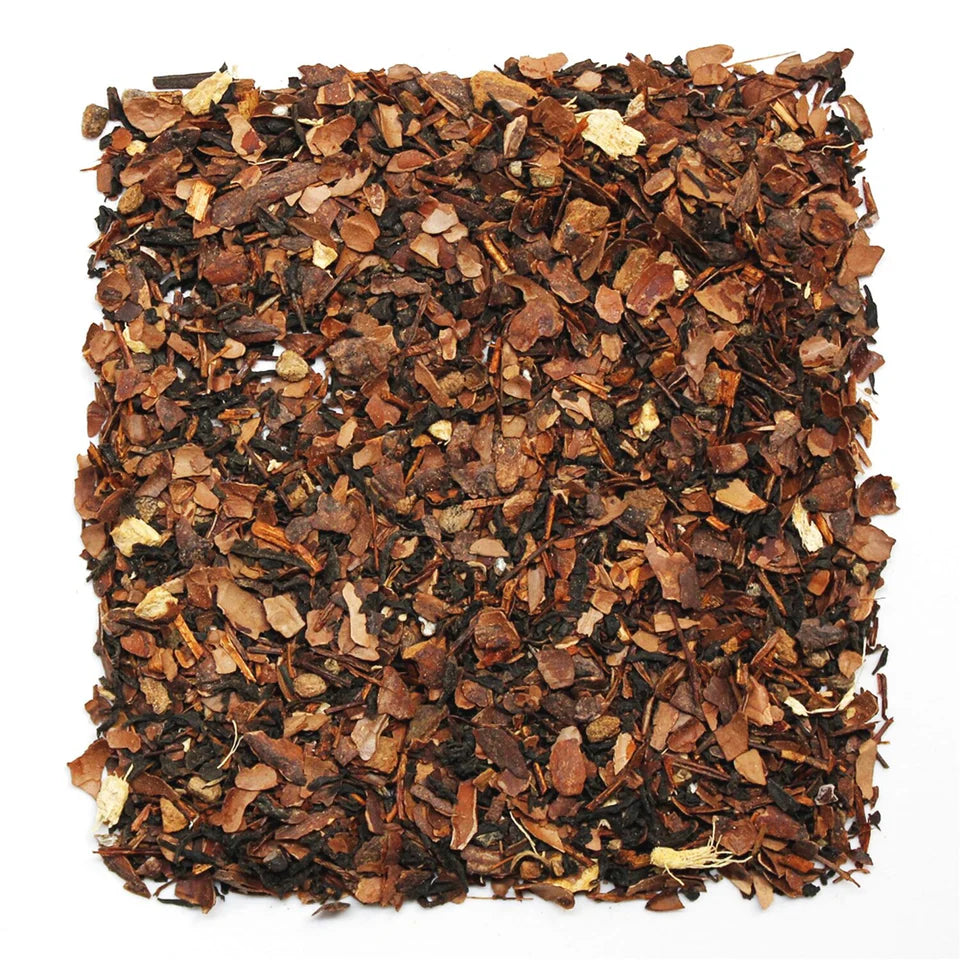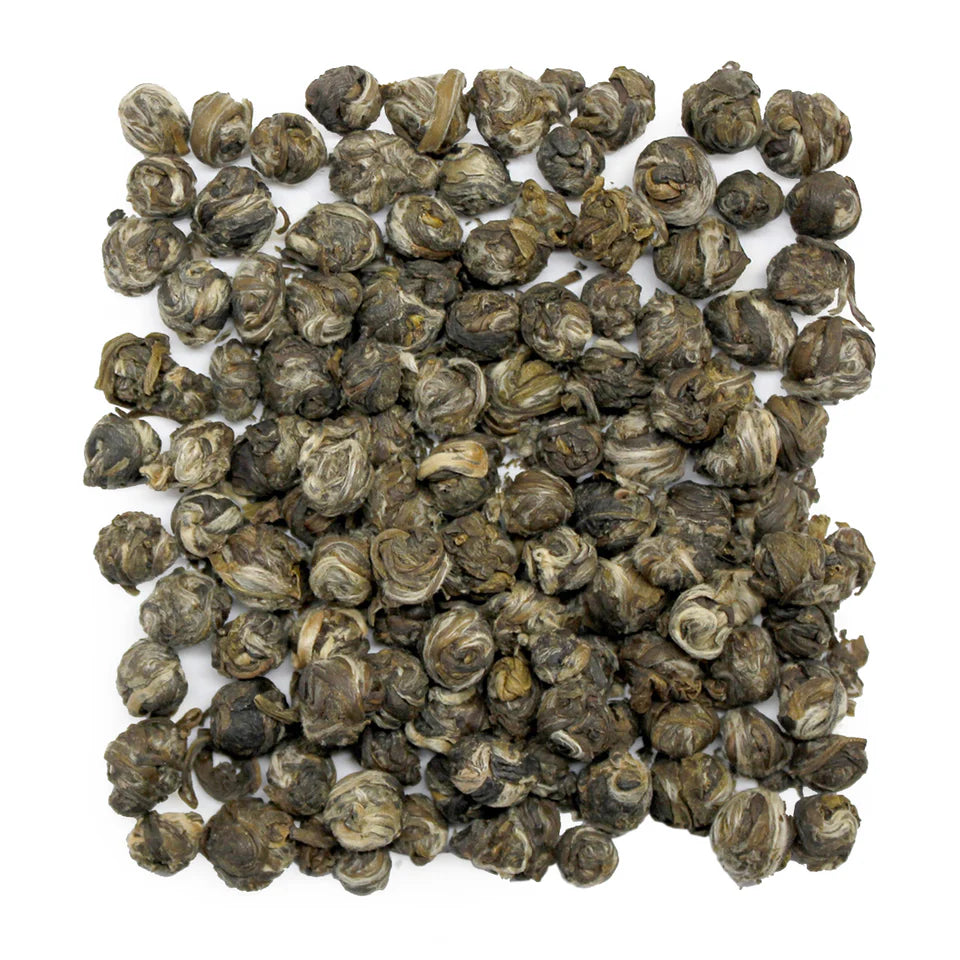Exploring the World of Single Origin Tea Varieties
In a small tea house in Kyoto, Akira Matsumoto carefully measures water heated to precisely 175 degrees Fahrenheit before pouring it over hand-harvested gyokuro leaves from Uji. Half a world away, in the misty hills of Darjeeling, third-generation tea farmer Rajesh Bansal inspects the season's first flush, running weathered fingers across leaves that will command prices rivaling fine wine. Meanwhile, in Portland, Oregon, tea sommelier Emma Chen guides customers through a tasting flight of single-origin oolongs, explaining how each cup tells the story of its birthplace.
These scenes represent the renaissance of single origin teas—varieties cultivated, harvested, and processed from a specific geographic region—that has been quietly brewing across the globe. As consumers grow increasingly interested in the provenance of their food and drink, single origin teas offer something beyond mere caffeine: a taste of place, history, and tradition in every cup.
The Essence of Origin: Defining Single Origin Teas
"Single origin tea is fundamentally about transparency and identity," explains Tony Gebely, tea researcher and author of "Tea: A User's Guide." "It's knowing not just the country, but the specific region, garden, or even mountainside where your tea was grown."
Unlike blended teas, which combine leaves from multiple sources to achieve consistency year after year, single origin teas embrace their distinctiveness. They reflect what French winemakers call terroir—the complete natural environment where a product is produced, including factors like soil, topography, and climate.
Dr. Selena Ahmed, ethnobotanist at Montana State University who studies tea systems, compares the concept to fingerprints: "No two tea gardens produce identical leaves, even when separated by just a few miles. The soil composition, elevation, rainfall patterns, and daily temperature fluctuations create unique biochemical signatures in the leaves."
This specificity comes with both rewards and challenges. "Single origin teas offer extraordinary sensory experiences, but they're also subject to seasonal variations," notes Donna Lo, founder of The Tea Spot in San Francisco. "A spring harvest might taste noticeably different from an autumn one from the same garden. For tea enthusiasts, that's not a flaw—it's the beauty of agricultural products that haven't been homogenized."
The Cultural Tapestry: History and Significance
Long before "single origin" became a marketing term, tea traditions around the world celebrated regional distinctiveness. In China's Fujian Province, rock tea (yan cha) from the Wuyi Mountains has been prized for centuries, with specific cliffs producing teas so sought-after they were sent as tribute to emperors.
"What we're seeing today is a return to historical appreciation," says Dr. Zhang Wei, tea historian at Beijing Normal University. "Before modern transportation and mass production, all tea was inherently local. People knew exactly which mountain produced the best tea for which occasion."
This connection between tea and place runs deep in producing cultures. In Japan, the concept of shincha—first harvest green tea—celebrates not just seasonality but locality. In India, Darjeeling's muscatel character is so distinctive that the region has sought the same geographical indication protections enjoyed by Champagne or Parmigiano-Reggiano.
The modern single origin movement, however, adds something new: a global conversation about these regional distinctions, allowing consumers everywhere to explore and appreciate these differences.
The Science of Excellence: Factors Influencing Tea Quality
What separates exceptional single origin tea from merely good tea? The answer lies in a complex interplay of environmental and human factors.
Terroir and Climate: Nature's Contribution
The elevation at which tea grows significantly impacts its character. "Higher elevations generally mean slower growth," explains agronomist Dr. Mei Lin of the Tea Research Institute in Hangzhou. "This stress on the plant creates more complex flavor compounds and often results in more aromatic cups."
Soil composition contributes minerals that tea plants absorb—volcanic soils of Taiwan influence the renowned honey notes in the island's high mountain oolongs, while the iron-rich soil of Kenya's tea regions contributes to the robust character of teas grown there.
Perhaps most fascinating is how climate change is altering these relationships. "We're seeing shifting harvest times, changing rainfall patterns, and new pest pressures," says climate researcher Dr. Tomas Ramirez, who studies agricultural adaptations. "Some historic tea regions may become unsuitable for cultivation, while others may emerge. The map of premium tea production is literally being redrawn."
Cultivar and Processing: The Human Touch
Even within the same garden, different tea plant varieties—or cultivars—produce dramatically different flavor profiles. The large-leafed Assamica variety offers bold, malty notes, while the small-leafed Sinensis variety tends toward more delicate, floral characteristics.
"Think of cultivars as instruments in an orchestra," suggests tea master Li Shiying, who trains tea processors in China's Yunnan Province. "The environment sets the composition, but the variety of plant determines whether you're playing a violin or a cello."
Processing methods transform the raw leaf into the final product, with techniques passed down through generations. The tea master's decisions—how long to wither the leaves, how vigorously to roll them, the precise temperature for firing—profoundly shape the finished tea.
Research from Seoul National University has identified more than 300 aromatic compounds in premium teas, their development intricately linked to each processing step. This complexity explains why the highest-quality single origin teas often come from producers who control the entire process from cultivation through processing.
From Field to Cup: Understanding Single Origin Tea Production
Traditional vs. Modern Methods
In Taiwan's Ali Shan mountains, tea maker Chen Ming-hui uses bamboo baskets to wither oolong leaves, periodically shaking them by hand to initiate the gentle bruising that begins oxidation. Meanwhile, in Japan's Shizuoka Prefecture, Takeshi Yamada oversees a state-of-the-art facility where sensors monitor moisture content and temperature during steaming and drying.
These contrasting approaches—one steeped in tradition, the other embracing technology—represent the spectrum of modern tea production.
"The best producers don't choose between tradition and innovation—they harness both," says tea educator Michelle Rabin. "They honor techniques refined over centuries while using modern understanding of plant biochemistry to make informed adjustments."
Scientific analysis now confirms what experienced tea makers have long known through observation: specific environmental conditions during processing dramatically affect quality. Temperature-controlled rooms now often replace weather-dependent outdoor withering, while specialized equipment provides consistency that hand processing alone cannot achieve.
Yet the human element remains irreplaceable. "No machine can taste a leaf and know exactly how many more minutes of oxidation it needs," notes fourth-generation tea maker Huang Rui from Anxi County, China. "That comes from experience passed through generations."

Impact of Harvesting Practices
The concept of "two leaves and a bud"—harvesting the tender shoot and adjacent leaves—has guided tea plucking for centuries. This standard balances yield with quality, as the youngest leaves contain the optimal balance of compounds that create desirable flavors.
Harvest timing proves equally crucial. "In Darjeeling, we might have just a ten-day window for peak first flush quality," explains estate manager Vikram Singhania. "Pick too early, and the flavors haven't developed fully. Too late, and you've lost the distinctive character of that harvest."
Labor practices significantly impact sustainability and quality. Machine harvesting, increasingly common in larger operations, increases efficiency but sacrifices selectivity. Hand-picking, though labor-intensive and increasingly expensive, remains the gold standard for premium single origin teas.
A Matter of Taste: Single Origin vs. Blended Teas
Differences in Flavor Complexity
"Blended teas offer consistency and familiarity," explains tea buyer Maria Fernandez, who sources for several specialty retailers. "Single origin teas offer adventure and discovery."
This distinction resembles the difference between single malt and blended Scotch whiskies. Blends aim for a reliable profile that transcends seasonal variations, while single origins showcase the distinctive characteristics of a specific place and time.
Research from the University of California's taste perception laboratory suggests that single origin teas often contain more identifiable flavor notes—floral, fruity, nutty, vegetal—that experienced tasters can detect. This complexity makes them particularly rewarding for those who approach tea with the same analytical appreciation wine enthusiasts bring to fine vintages.
Consistency and Authenticity
The hallmark of quality blended tea is consistency—a Breakfast Blend that tastes identical from year to year. Single origin teas embrace natural variation, reflecting each season's unique conditions.
"A truly great tea is an agricultural product, not a manufactured one," argues tea importer Jeffrey McIntosh. "Just as wine lovers understand that vintages vary, tea appreciation means understanding that environmental factors leave their imprint on each harvest."
This variability creates both challenges and opportunities for producers and consumers. Environmental anthropologist Dr. Sarah Jenkins, who studies tea communities, notes: "Producers of high-quality single origin teas are essentially creating luxury agricultural items that command premium prices, which can support sustainable farming practices and living wages."
Regional Expressions: Taste and Aroma Profiles
Different tea-producing regions have developed distinctive styles shaped by their environments and traditions:
-
Chinese Wuyi rock oolongs offer mineral-forward flavors with notes of charcoal, stone fruits, and honey, reflecting the rocky terrain where they grow.
-
Taiwanese high mountain oolongs present buttery, floral characteristics with remarkable sweetness, a result of cultivation at elevations above 1,000 meters in frequent mist and cloud cover.
-
Japanese sencha from Kagoshima tends toward grassy, marine notes with pronounced umami, while sencha from Uji often presents more balanced sweetness.
-
Darjeeling first flush teas display the famous "muscatel" grape-like character with floral overtones, while second flush harvests develop deeper fruit notes and amber liquor.
-
Kenyan teas from the eastern highlands offer bright, copper-red infusions with robust flavor that forms the backbone of many breakfast blends.
"These regional distinctions are becoming more recognized by consumers," notes tea educator Anna Mariani. "People who might have simply asked for 'green tea' a decade ago now specifically request Dragonwell from Hangzhou or gyokuro from Uji."
The Value Proposition: Pricing and Worth
Evaluating Price vs. Quality
Premium single origin teas often command prices that raise eyebrows among casual tea drinkers. A 50-gram package of exceptional Taiwanese high mountain oolong might cost $50 or more—translating to several dollars per cup.
"The economics of fine tea production explain these prices," says agricultural economist Dr. Robert Chen. "Consider that it takes approximately 10,000 hand-plucked shoots to produce one pound of finished tea. Factor in land constraints in mountainous regions, increasingly expensive labor, and climate uncertainties, and you begin to understand the pricing."
For producers like Xu Meiling, whose family has grown Dragon Well green tea outside Hangzhou for generations, the challenge lies in communicating this value. "Our true competition isn't other tea producers but rather coffee shops selling $5 lattes," she explains. "We need consumers to understand that our $30 tin of tea might provide 20-30 exceptional brewing sessions—actually making it quite economical compared to other premium beverages."
Perceived Value and Market Demand
Consumer education drives the market for single origin teas. "Once customers experience truly exceptional tea and understand its story, price resistance diminishes," observes retail specialist Jamal Wilson, who has tracked specialty tea market growth for a decade. "It's similar to what happened with craft beer, specialty coffee, and artisanal chocolate—consumers increasingly prioritize quality and provenance over quantity."
This shift benefits producers who prioritize quality over yield. In Yunnan Province's Lincang region, the premium for ancient tree Puerh tea has incentivized preservation of old-growth tea forests that might otherwise have been replaced with higher-yielding cultivated gardens. Similarly, in Darjeeling, estates producing exceptional first flush teas can better weather economic pressures that have led some plantations to convert to other crops.
Beyond Taste: Health Benefits of Single Origin Teas
Antioxidants and Nutritional Content
All true teas—from the Camellia sinensis plant—contain beneficial compounds including catechins, theaflavins, and L-theanine, though concentrations vary significantly based on variety, growing conditions, and processing methods.
Research from the National Institutes of Health has documented tea's potential benefits for cardiovascular health, with regular consumption associated with reduced risk of heart disease and stroke. Additional studies suggest possible protective effects against certain cancers, neurodegenerative disorders, and type 2 diabetes.
"What makes single origin teas potentially interesting from a health perspective is their typically higher concentration of beneficial compounds," explains nutritional biochemist Dr. Elena Rodriguez. "Less industrial processing generally means more retention of natural polyphenols and antioxidants."
Potential Health Impacts of Single Origin Teas
Beyond the general benefits of tea consumption, emerging research examines how growing region and processing affect the phytochemical profile and potential health impacts of different teas.
A 2023 study published in the Journal of Agricultural and Food Chemistry found significant variations in catechin profiles among white teas from different origins, with some showing notably higher antioxidant activity. Another study from Zhejiang University demonstrated that high-elevation grown green teas contained higher levels of theanine—an amino acid associated with cognitive benefits and stress reduction—than the same cultivars grown at lower elevations.
"The research increasingly suggests that terroir matters not just for flavor but potentially for health benefits as well," notes tea researcher Dr. Wei Chen. "Though we should be careful not to overstate these differences without more comprehensive clinical studies."

A Mindful Choice: Making Informed Tea Selections
As with any culinary exploration, personal preference ultimately guides tea selection. Some may prioritize the bright assertiveness of a Kenyan black tea, while others seek the subtle complexity of a Chinese white tea or the grassy vibrancy of a Japanese green.
What distinguishes the single origin tea experience is connection—to place, tradition, and the natural world. "When you prepare a single origin tea mindfully, you're participating in a ritual that connects you to generations of tea drinkers and makers," reflects tea ceremony instructor Yumiko Tanaka. "You taste not just leaves and water, but history, geography, and human craft."
For consumers interested in exploring this world, experts recommend starting with reputable specialty retailers who provide detailed information about origin, harvest date, and processing method. Online communities and local tasting events offer opportunities to compare regional styles and develop personal preferences.
"The beauty of the single origin tea journey is that it never ends," says tea author Jane Pettigrew. "There's always another region, another processing style, another cultivar to discover. Each cup offers not just refreshment, but education."
In our globalized world of increasingly homogenized products, single origin teas offer something increasingly rare: authentic expression of place, preserved in leaves, waiting to be awakened in your cup.
FAQ: Single Origin Teas
Are single origin teas always of higher quality than blended teas?
Not necessarily. Quality depends on multiple factors including plant material, growing conditions, harvesting standards, and processing expertise. Premium blends often contain high-quality leaves selected for complementary characteristics. Single origin designation indicates provenance but doesn't guarantee superiority.
How does terroir influence the quality of single origin teas?
Terroir—the environmental factors including soil, climate, and topography—fundamentally shapes tea character by influencing the plant's development of flavor compounds, antioxidants, and other biochemical constituents. Higher elevations often produce slower-growing leaves with more complex flavor compounds, while soil minerals contribute subtle taste characteristics.
Are there specific health benefits associated with drinking single origin teas?
Research suggests that minimally processed single origin teas may retain higher levels of beneficial compounds like catechins, theaflavins, and L-theanine compared to mass-produced blends. However, health benefits vary based on processing methods, growing conditions, and individual tea varieties rather than origin status alone.
How can consumers differentiate between authentic single origin teas and misleading marketing claims?
Look for specific information about the exact growing region (beyond just country), harvest season and year, elevation, and processing method. Reputable vendors provide details about the actual gardens or cooperatives producing the tea. Price can be an indicator—exceptionally cheap "single origin" teas from regions known for high production costs may indicate questionable sourcing.








